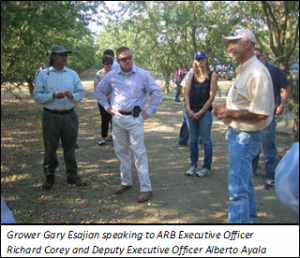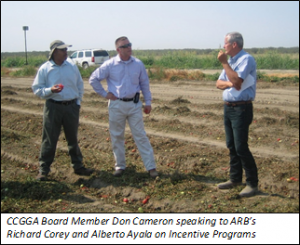The Association has received the final information on cotton acreage in California including the breakdown between upland and pima. The acreages as determined by the California Department of Food and Agriculture’s Pink Bollworm Program are 56,730 acres of upland and 153,670 acres of pima, for a total of 210,400 acres. The breakdowns are as follows:
The breakdown in the San Joaquin Valley is as follows:
|
SAN JOAQUIN VALLEY |
||
|
County |
Upland Acres |
Pima Acres |
|
Fresno |
7,395 |
40,380 |
|
Kern |
4,175 |
30,260 |
|
Kings |
4,040 |
60,660 |
|
Madera |
715 |
30 |
|
Merced |
19,895 |
16,190 |
|
Tulare |
8,090 |
5,940 |
|
TOTALS = |
44,310 |
153,460 |
In Southern California, the breakdown is as follows:
|
SOUTHERN CALIFORNIA |
||
|
County |
Upland Acres |
Pima Acres |
|
Imperial |
2,485 |
210 |
|
Riverside |
7,445 |
0 |
|
San Bernardino |
115 |
0 |
|
TOTALS = |
10,045 |
210 |
In the Sacramento Valley, the breakdown is as follows:
|
SACRAMENTO VALLEY |
||
|
County |
Upland Acres |
Pima Acres |
|
Glenn |
1900 |
0 |
|
Sutter |
475 |
0 |
|
TOTALS = |
2375 |
0 |
Please be advised that the acres listed are based on Pink Bollworm Program field mapping techniques are intended for use on PBW Program detection and control activities and are not assumed to represent exact cotton acreage planted in California.



 The Association co-hosted a special tour for Richard Corey, Executive Officer of the California Air Resources Board (CARB) and Alberto Ayala, Deputy Executive Office of CARB, along with some CARB and SJVAPCD staff. The focus of the tour was to introduce the Executive Officers to agricultural equipment and the issues facing the industry with regards to incentive programs and potential regulations. The two day tour covered many different crops and areas of the valley in an attempt to educate the agency on the vast difference in equipment,
The Association co-hosted a special tour for Richard Corey, Executive Officer of the California Air Resources Board (CARB) and Alberto Ayala, Deputy Executive Office of CARB, along with some CARB and SJVAPCD staff. The focus of the tour was to introduce the Executive Officers to agricultural equipment and the issues facing the industry with regards to incentive programs and potential regulations. The two day tour covered many different crops and areas of the valley in an attempt to educate the agency on the vast difference in equipment,  the types of specialty equipment that is used in agriculture and the unique challenges facing agriculture including the devastating drought situation. The tour included visits to the operations of CCGGA members Gary Esajian, Bob Wilson, and Don Cameron. The types of agricultural operations visited included citrus groves, stone fruit orchards and packing house, a corn silage field and dairy, cattle feedlot, almond orchards, tomato field, onion and bell pepper fields and a cantaloupe field. Cooperating organizations in the tour included California Citrus Mutual, California Grape and Tree Fruit League, the Nisei Farmers League and the Milk Producers Council.
the types of specialty equipment that is used in agriculture and the unique challenges facing agriculture including the devastating drought situation. The tour included visits to the operations of CCGGA members Gary Esajian, Bob Wilson, and Don Cameron. The types of agricultural operations visited included citrus groves, stone fruit orchards and packing house, a corn silage field and dairy, cattle feedlot, almond orchards, tomato field, onion and bell pepper fields and a cantaloupe field. Cooperating organizations in the tour included California Citrus Mutual, California Grape and Tree Fruit League, the Nisei Farmers League and the Milk Producers Council.